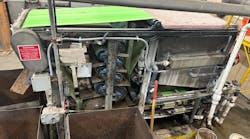You don’t have to live on the banks of the Schuylkill River to have an impact on its water quality.
In fact, the area of land that drains into the Schuylkill River, known as its watershed, covers about 2,000 square miles and includes parts of 11 counties in southeastern Pennsylvania. The actions of people who live and work in that area are important in protecting the river. Little things, like properly disposing of used motor oil, maintaining septic tanks and not overusing pesticides on lawns, can make a big difference.
A major effort is underway to improve the Schuylkill River and its tributaries, which serve as a drinking water source for more than 1.5 million people and a popular recreational and industrial resource.
The effort is being led by the Schuylkill Action Network, a group of more than 60 government, business and non-profit partners convened by the U.S. Environmental Protection Agency to tackle the challenges in restoring the river. Its founding members include the EPA, Pennsylvania Department of Environmental Protection, Philadelphia Water Department and Delaware River Basin Commission.
In addition to raising awareness of the need to protect the Schuylkill, the network is busy with a variety of projects to deal with specific problems impacting the river. The problems were identified in a full assessment of the river—the first step in what may be a model approach to watershed protection.
The assessment found that despite progress, about one third of the waters were impaired, meaning that they do not meet water quality criteria established to protect streams. The biggest culprits were drainage from abandoned mines, agricultural practices, stormwater runoff and sewage overflows.
Once the threats were determined, the Schuylkill Action Network went to work on a voluntary basis to create solutions and achieve results that can be measured. Integrated workgroups are executing strategies for each source of pollution. The effort is being aided by a highly competitive $1.15 million EPA Targeted Watershed Grant authorized by the Bush Administration.
The Schuylkill Action Network approach is based on collaborative problem solving. The involvement of all citizens is vital to the success of the restoration effort.
Source: EPA

